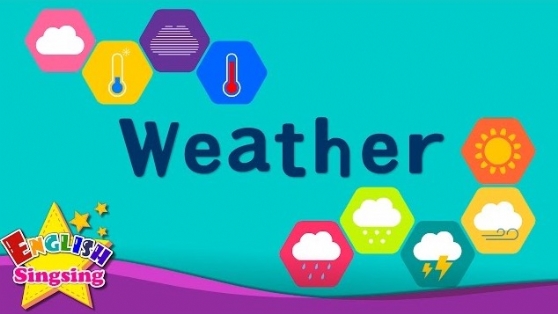İngilizcede In, kutu, oda ve ülke gibi üç boyutlu şeylerin içinden bahsederken kullanılır. On ise zemin, masa ve duvar gibi iki boyutlu yüzeylerin üstünden bahsederken kullanılır.
Where is Joe? ’In the kitchen.’
There is nothing in the fridge.
Ann’s in Poland.
Why are all those papers on the floor?
She had photos of all her family on the wall.
İnsanlar elbisenin içindedirler, elbiseler ve takılar ise insanların üstünde:
Who is the man in the grey suit?
Gri takım elbisenin içindeki adam kim?
-------------------------------------
That sweater looks good on you.
Kazak senin üzerinde iyi görünüyor.
-------------------------------------
She had a ring on every finger.
Parmağının üzerinde bir yüzük var.
Gördüğünüz gibi, elbisenin içinden söz ederken in, kişinin üzerindeki bir nesneden söz ederken ise on kullanıldı.
Aşağıdaki kullanımlara bakalım:
In a bath
On the roof
In a tree
On a table
In a cup (fincan)
On her arm
On the plate
In your head (düşünce)
On your head (şapka)
On a door
Şu durumlara da dikkat edelim:
in a book, in the newspaper, in a story, on a page, in a street.
Is there anything interesting in the paper?
Her photo is on the page 4.
They live in Park Street.
Aşağıdaki cümlelerdeki in ve on kullanımlarına bakalım:
In children stories, animals can talk.
’Are you free next Tuesday?’
’Just a minute. I’ll look in my diary.’
Is Sandra in the office today?
She had a wonderful diamond ring on her first finger.
’Where is the salt?’ ’In the cupboard.’
The cat likes to sleep on the roof or the car.
Don’t leave your keys in your car when you get out.
They live in a little village near Belfast.
Önemli: Arabadan söz ederken "in a car" denir ama otobüsten, trenden vs. bahsederken de "on a bus/train/plane/ship" şeklinde söylenir.
At edatının kullanımı:
At edatı genellikle mekan bildirirken, olayın nerede olduğunu söylerken kullanılır.
I’ll see you this evening at Sarah’s house.
You have to change planes at Karachi.
I saw Ann waiting at the bus stop.
Turn left at the next corner.
At, insanların yaptığı işlerden ya da o işleri nerede yaptıklarından söz ederken kullanılır:
at a football match
at breakfast, lunch
at a restaurant
at work
at the office
at the theatre
at the cinema
at the station
at a party
at (the) college/university
Aşağıdaki örnek cümleleri inceleyelim:
Paul crashed his car because he didn’t stop at the traffic lights.
Are there any good films at the cinema this week?
Her train was terribly late- I spent hours waiting at the station.
The boss doesn’t let us take personal phone calls at work.
The top, the bottom, the side, the beginning, the end gibi ifalerle birlikte at kullanılır.
My room’s at the top of the house.
Begin at the beginning.
Their house is down at the bottom of the hill.
I never have any money at the end of the month.
Diğer yer bildiren edatlar ise şunlardır:
Above: üstünde
Against: karşısında, dayalı
Behind:arkasında
Betweeen: arasında
By: yanında
In front of: önünde
Near: bitişiğinde
Opposite: karşısında
Under: altında
Bu edatlarla ilgili aşağıdaki örnek cümleleri inceleyelim:
Ann is sitting between Eric and Julia.
Come and sit by me.
We camped by the lake.
Montreal is in the eastern Canada, near Ottowa.
I left my bicycle against the shop window.
Joe’s car is pasked in front of the house.
There is a bus stop opposite our house.
Lucy is in the front of Pat.
Pat is behind Lucy.
Andy is opposite Mike.
The dog is hiding under the table.
The plane is flying above the clouds.
Aşağıdaki örnek cümleleri inceleyelim:
I usually sit by a window in class, so I can look out if I get bored.
There was a big bird flying high up above the trees.
They live in a beautiful old house by a river.
There is a big clock above the door of the station.
I sat down by Mary and looked into her eyes.
You can park your car behind the house.
I will meet you at the station under the clock.
2019-12-08 Admin Admin
Taglar: İngilziceBildirenEdatlarPrepositionsKonuAnlatımıÖrnekler
| Genel İngilizce Konuları - İlginizi çekebilecek başlıklar |
|---|
|
Geçmiş Zaman İle Pasif Cümleler Oluşturma (Simple Past Passive)
Yukarıdaki tabloda görüldüğü gibi, pasif cümlelerde "be + fiilin 3. hali ya da -ed eki almış hali" kullanılır kuralı geçmiş zaman için de geçerlidir. Aradaki tek fark, be fiili geçmiş zaman hali ile kullanılır, yani was,were |
|
Gelecek Zaman İle Pasif Cümleler Oluşturma (Future Passive)
Yukarıdaki tabloda görüldüğü, gelecek zaman pasif cümlelerinde, genel pasif kuralında olduğı gibi "be yrd. fiili gelir ve fiil 3. hal yada -ed eki alır" kuralı geçerlidir. |
|
Geniş Zaman İle Pasif Cümleler Oluşturma (Simple Present Passive)
Yukarıdaki tabloda görüldüğü gibi, eğer geniş zamanla pasif bir cümle oluşturacaksak, be fiilini kullanmalıyız ve fiil ya 3. halde olmalı ya da -ed eki almalıdır. |
|
Be able to Modal Verb ve Örnekler
Be able to aslında modal verb değildir. Be fiiline sıfat olan able’ın ve mastar olan to’nun eklenmesi ile oluşmuştur. Modal konusunda yer almasının nedeni, kimi zaman can ve could yerine kullanılmasıdır. |
|
Can Modal Verb ve Örnekler
Can bir yardımcı fiildir, modal yardımcı fiilidir. Can, bir şeyin mümkün olup olmadığı ya da birisinin birşeyi yapma becerisinin olup olmadığını anlatırken kullanılır. Rica, istek, izin gibi durumlarda da can kullanılabilir. |
|
Comparative ve Superlative Sıfatlar Arasındaki Farklar ve Örnekler
Bu yazımızda, comparative adjectives ile superlative adjectives arasındaki farkları, örnek cümleler ve Türkçe anlamları ile birlikte göreceğiz. |




Sayfa Yorumları